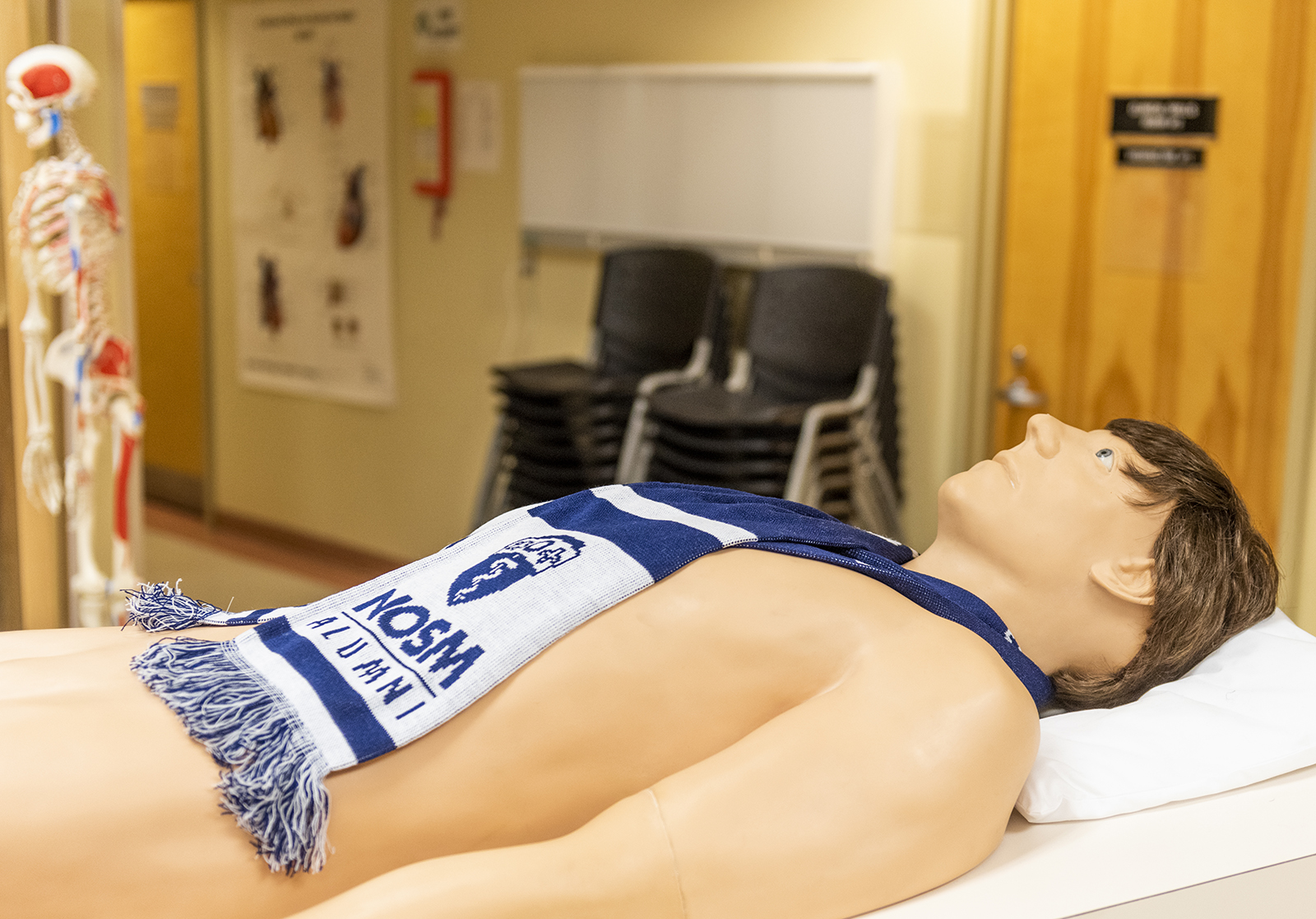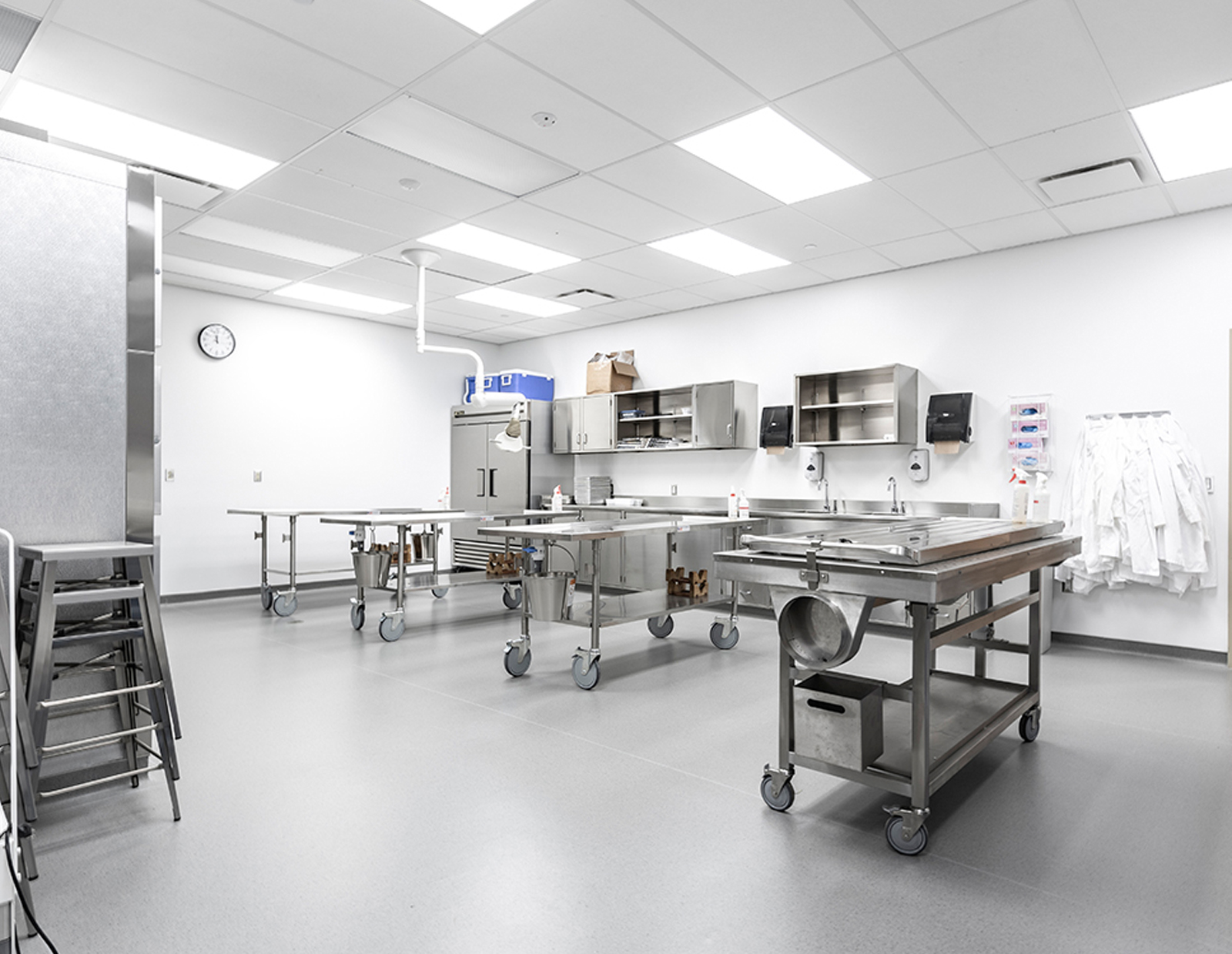The Evolution of Emerging Technology


NOSM’s Clinical Skills Lab
Harvey started his career at NOSM in 2005 with the inaugural class as a proven simulation system to teach cardiac assessment skills that transfer to real patients.
For students, he offered realistic learning opportunities and put NOSM on the map as Canada’s first medical school to have a cardio-respiratory mannequin in its human-like simulation collection.
“A unique and important feature of Harvey was his magnetic stethoscope,” says Lee Shewchuck, Educational Lab Coordinator at NOSM. “When placed at different positions on the rib cage, the sounds of the abnormalities of the separate heart valves and breath sounds could be heard.”
Among his strengths was the ability to allow an entire class to hear heart sounds using infrared stethoscopes. Harvey impressed even more when the labs were upgraded to include video conferencing and Harvey’s heart sounds were then broadcast over the audio system.
Remembered for his contributions as the School’s first state-of-the-art heart simulator, Harvey retired in 2020 and has been replaced with a smaller, more portable, higher-functioning cardiac simulator called SAM II.

BodyWorlds exhibit specimens
Another exciting development in NOSM’s educational resources are the plastinated cadaveric specimens with pieces from world renowned Von Hagens Plastination in Germany, well known for their BodyWorlds exhibits. These are one-of-kind teaching specimens which do not require refrigeration, are odorless, and with proper handling can be touched with bare hands.
“The specimens are very life-like,” explains Shewchuck. “The dyes used mimic fresh muscle tissue very closely. The way they are plastinated allows for the muscles and structures to be posed and frozen in place to better reveal the adjacent anatomical structures and major nerves and vessels can be prominently displayed and easily located.”

Wet lab renovations and upgrades
NOSM’s anatomy labs are primarily used by the medical students, so additional cadaveric storage space, dissection tables and a more functional floor space mean the lab could be a valuable space for residents as well. These major improvements allow the space to accommodate twice as many students during demonstrations and rehearsals of clinical procedures and surgical skills. She says the renovations enrich the learning experience.
“The labs at NOSM have been upgraded to open spaces that include stainless steel cadaver tables that can easily be moved, where learners and facilitators are able to maneuver with ease at different angles,” says Tamara Boyd, Administrative Manager of Educational Resources at NOSM. “Key upgrades also include hands-free washing stations, stainless steel counters and cabinets for sterilisation, non-permeable seamless flooring, proper cadaveric refrigeration storage and ventilation.”
What’s up next?
“The emergence of technology, artificial intelligence and robotics needs to be integrated into the training of our students and residents and lifelong learning for our faculty,” says Dr. Sarita Verma, Dean, President and CEO of NOSM.
